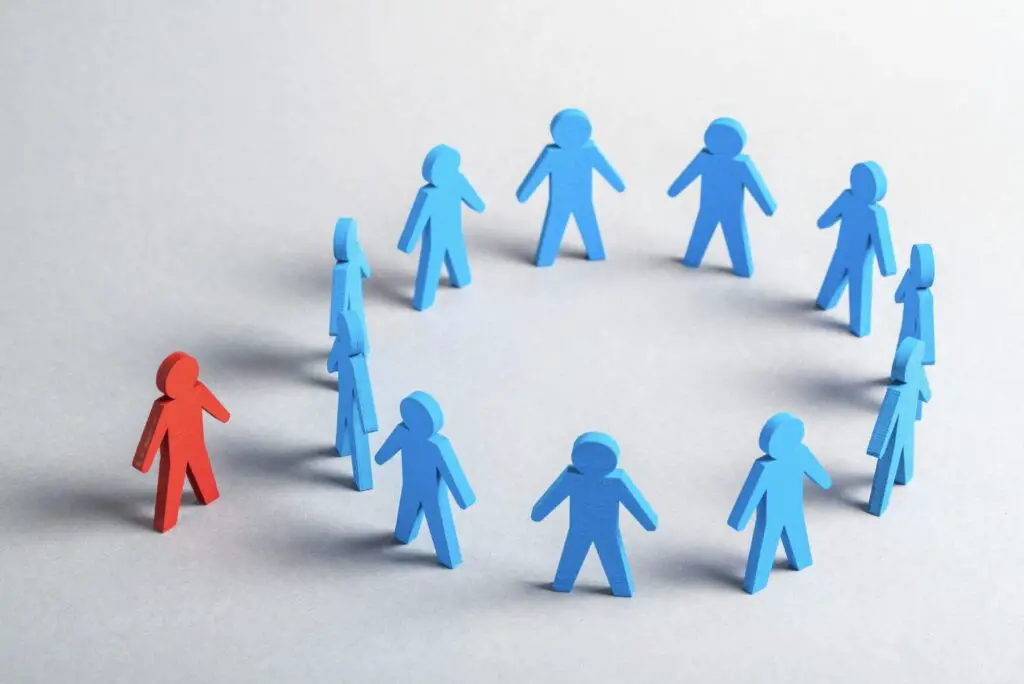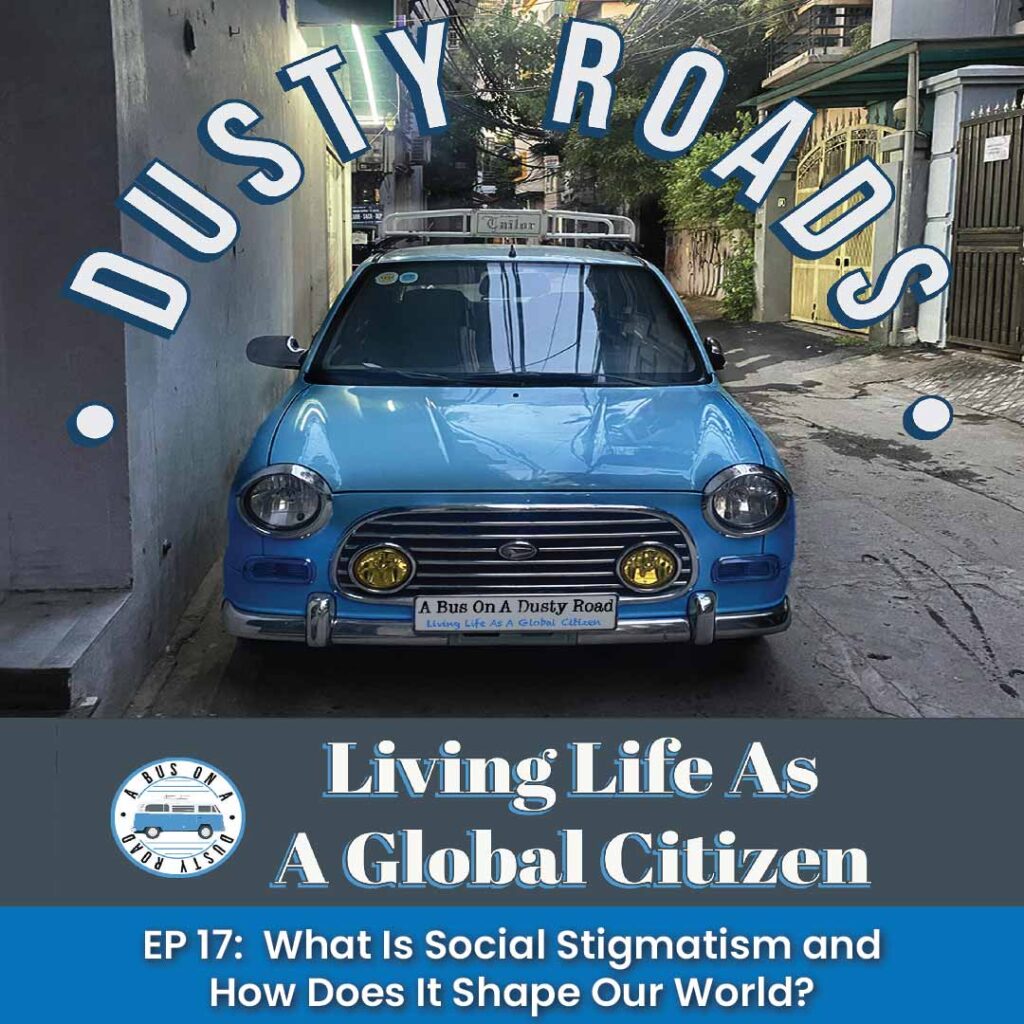Exploring the depths of social stigmatism sheds light on the invisible barriers that define our interactions and shape societal norms. This exploration uncovers the multifaceted impact of stigmatism on an individual and collective level, revealing the challenges and opportunities we face in striving for a more inclusive society.
From the roots of ancient societies to the complexities of the digital age, understanding the evolution of stigmatism offers a blueprint for fostering acceptance and dismantling prejudices that hinder progress.
Table of Contents
- The Origins and Evolution of Social Stigmatism
- Psychological and Societal Impacts of Stigmatism
- Contemporary Examples and Case Studies
- Addressing and Overcoming Social Stigmatism
- Related Questions
The Origins and Evolution of Social Stigmatism
Social Stigmatism: Origin and Evolution Through the Ages
In the vast expanse of human history, social stigmatism is a testament to our evolving understanding of difference and belonging. At its core, social stigmatism refers to the process by which specific individuals or groups are unjustly marginalized due to attributes perceived as abnormal or undesirable. This intricate social mechanism has roots that stretch deep into the annals of time, evolving alongside human societies.
The Genesis of Stigma
Social stigmatism’s origins can be traced back to primal human instincts for survival and cohesion. In early human communities, collective well-being hinged on unity and conformity. Members who exhibited behaviors or bore characteristics that deviated from the norm were often viewed with suspicion, as their differences posed potential threats to the group’s harmony and survival. Thus, the seeds of social stigmatism were sown, marking those who differed as ‘others.’
As civilizations advanced, the fabric of social stigmatism grew more complex. The ancient laws and texts of societies such as Greece and Rome provide evidence of systemic stigmatization, where laws and norms enshrined discrimination against certain groups. This was not limited to physical attributes; behaviors and beliefs diverging from societal norms were equally stigmatized.
Religion and Stigmatism
The advent of major world religions introduced new dimensions to social stigmatism. Religious doctrines often dictated moral boundaries, defining what was considered ‘normal’ or ‘acceptable.’ Those who deviated from these prescribed norms faced stigmatization, their identities marked by their supposed moral or spiritual failings. This religious influence not only perpetuated existing stigmas but also codified them, embedding discriminatory views into the societal fabric.
Industrialization and the Shift in Stigma
The Industrial Revolution and the advent of the modern era brought about seismic shifts in human society, altering the landscape of social stigmatism. The migration to urban centers and the rise of new economic structures created novel social dynamics and tensions. In this melting pot of change, new stigmatization emerged, targeting those who struggled to adapt to the new industrial and urban norms.
Furthermore, as scientific understanding progressed, it began to challenge traditional bases of stigmatism, particularly those rooted in superstition and religious doctrine.
The 20th Century: A New Dawn for Understanding Stigma
The tumultuous events of the 20th century, including wars, social upheavals, and the civil rights movement, catalyzed profound reflection on the nature of social stigmatism. Scholars and activists began to dissect the stigma mechanisms, seeking to understand its roots and effects. Erving Goffman’s seminal work, “Stigma: Notes on the Management of Spoiled Identity,” published in 1963, provided groundbreaking insights into the experiences of those stigmatized and the societal processes that enforce stigma.
In the latter half of the century, the fight against stigma found allies in emerging social movements, from civil rights activists to feminist and LGBTQ+ advocates. These movements challenged the entrenched norms and highlighted the injustice and harm wrought by stigma. They fought for the de-stigmatization of race, gender, sexuality, and mental health, advocating for a society that embraced diversity and equity.
The Digital Age: Stigmatism in the 21st Century
Today, in the digital age, social stigmatism continues to evolve. The internet and social media have transformed the way we interact, offering new platforms for community and understanding but also for exacerbating and spreading stigma. Cyberbullying and online shaming have emerged as modern conduits of stigmatism, highlighting the persistent challenge of combating stigma in human society.

Psychological and Societal Impacts of Stigmatism
Exploring the Depths of Stigmatism: Its Impact on Individuals and Society
Stigmatism, a force as old as humanity itself, extends its invisible threads into every facet of modern life, influencing perceptions, interactions, and opportunities. This phenomenon, deeply embedded in our psyches and societies, delivers profound psychological and societal consequences that merit a comprehensive examination.
The Psychological Effects
At the heart of stigmatism’s impact is the psychological toll it exacts on individuals. Those who find themselves on the receiving end of stigma may experience a wide array of emotions: shame, solitude, frustration, and a crippling sense of inadequacy. The weight of these feelings can heavily influence self-esteem, often leading to a distorted self-image. The internalization of societal judgments fosters an environment where individuals doubt their worth and potential, leading to self-limitation and despair.
Anxiety and Depression
Stigma fuels the fires of anxiety and depression, isolating individuals not just socially but emotionally. The constant battle against preconceived notions and stereotypes can be exhausting, fostering a psychological environment ripe for anxiety disorders and depressive episodes. The sense of being perpetually misunderstood or rejected by society acts as a barrier to seeking support, exacerbating feelings of loneliness and helplessness.
The Breakdown of Community Connections
On a societal scale, stigmatism serves as a divisive force, fragmenting communities and eroding the fabric of social cohesion. Individuals stigmatized for their identity, be it due to ethnicity, mental health, socioeconomic status, or any other marker, often face exclusion and isolation.
This deprives them of community support and perpetuates ignorance and misunderstanding among the wider society. The breakdown of these vital connections undermines a community’s collective strength and empathy, limiting its potential for growth and resilience.
Healthcare Disparities
One of the most tangible societal consequences of stigmatism is visible in the realm of healthcare. Stigmatized individuals might avoid seeking necessary medical help for fear of judgment or mistreatment, leading to worsened health outcomes. This is particularly prevalent in mental health and diseases associated with social stigma, such as HIV/AIDS. The reluctance to seek timely help can escalate manageable conditions into severe health crises, affecting the individual and placing additional strains on healthcare systems.
Economic Ramifications
Stigmatism carries significant economic consequences as well. When individuals are marginalized based on arbitrary or discriminatory criteria, their access to employment opportunities, education, and upward mobility is severely restricted.
This affects the economic stability and growth potential of the individuals concerned and impedes broader societal advancement. The waste of human talent and potential due to stigma is a loss everyone bears, manifesting in reduced innovation, productivity, and economic diversity.
Cultural Stereotypes and Media Representation
Cultural stereotypes and media representation often fuel the perpetuation of stigma. Negative portrayals and one-dimensional characters reinforce harmful stereotypes, entrenching stigmatism deeper within societal consciousness. This creates a cycle where stigmatized individuals are both shaped by and trapped within these narratives, struggling to break free from the confines of societal expectations and prejudice.
A Path Forward
Addressing stigmatism’s profound psychological and societal consequences requires a multifaceted approach. It demands an increase in education and awareness, promoting empathy, understanding, and acceptance across all levels of society.
Efforts to dismantle systemic barriers and create inclusive spaces where diverse voices and experiences are valued and respected are crucial. Similarly, media and cultural representations must evolve to offer nuanced portrayals that reflect the complexity of human experiences, challenging stereotypes rather than reinforcing them.
By confronting stigmatism head-on, we pave the way toward a more compassionate, understanding, and inclusive society. One in which every individual, irrespective of their background or circumstances, has the opportunity to thrive without the shadow of stigma darkening their path.

Contemporary Examples and Case Studies
Despite advancements in education, awareness, and technology, social stigmatism continues to be a persistent issue. It is a barrier to inclusion, understanding, and support for individuals or groups who are often unjustly marginalized.
The contemporary examples of mental health stigma, stigma associated with homelessness, and the stigmatization of diseases such as COVID-19 highlight the enduring nature of social stigmatism and its impact on individuals and communities.
Mental health, despite being a critical component of overall well-being, is often enveloped in stigma. Individuals facing mental health challenges may find themselves subjected to prejudice and discrimination, not only socially but also within employment settings.
This stigma can deter people from seeking the support and treatment they need, exacerbating their conditions and leading to a cycle of isolation and suffering. High-profile campaigns and movements have sought to normalize conversations around mental health, yet the stigma persists, showing the gap between awareness efforts and societal change.
Homelessness is another area where stigmatism is evident. People experiencing homelessness often face widespread public and institutional bias, seen not as individuals in need of compassion and support but as failures or nuisances.
This stigma can have tangible consequences, affecting their ability to access services, secure employment, and reintegrate into society. By viewing homelessness through the lens of personal failure rather than as a systemic issue, society overlooks the complex interplay of factors, including economic instability, mental health, and affordable housing shortages, that lead to homelessness.
The outbreak of COVID-19 introduced a new dimension to social stigmatism. Those who contracted the virus, as well as healthcare workers and communities closely associated with the outbreak, have faced social stigma and discrimination. This stigmatization not only makes the social recovery for these individuals more challenging but can hamper public health efforts by discouraging people from reporting symptoms or exposure due to fear of social repercussions.
These examples illustrate that while the forms and targets of stigmatism may evolve, the underlying issue remains deeply rooted in societal attitudes and behaviors. The persistence of social stigmatism in these areas underscores the importance of continued efforts to educate, advocate, and legislate for change.
It emphasizes the need for a collective shift towards more compassionate, understanding, and inclusive ways of interacting with one another, recognizing the dignity and worth of every individual, regardless of their circumstances or challenges.
By illuminating these contemporary examples of social stigmatism, we acknowledge the work still needed and reinforce the call to action for everyone to play a role in dismantling these barriers. Through understanding, empathy, and concerted effort, society can move towards a future where stigmatism no longer dictates the opportunities, perceptions, and treatment of individuals facing these challenges.

Addressing and Overcoming Social Stigmatism
Efforts to combat and overcome social stigmatism are vital for building a society rooted in equality, respect, and understanding. To make substantial progress, these actions involve strategic actions aimed at education, advocacy, legislation, and building channels for open conversations.
Educational programs are pivotal in dismantling stereotypes and misconceptions that fuel social stigmatism. These programs should start early in school curricula, emphasizing the value of diversity, empathy, and the importance of treating everyone with respect. By instilling these values from a young age, future generations will grow with a more inclusive mindset, reducing prejudice and discrimination.
Advocacy efforts are also essential, as they empower voices often silenced by stigmatization. This involves not only supporting individuals who directly face stigmatism but also encouraging allies to speak out. Advocacy creates a platform for sharing personal stories and experiences, which can be powerful tools for change. Understanding the human element behind social issues fosters empathy and can alter negative perceptions, leading to a more accepting society.
Legislative actions are crucial for formalizing the fight against social stigmatism. Laws and policies that prohibit discrimination ensure equal rights, protect individuals from stigmatization, and enforce societal standards of behavior.
They also offer a framework for addressing grievances and injustices related to stigmatism. However, legislation should be accompanied by efforts to ensure these laws are implemented effectively and that the general public understands the importance of these regulations.
Building open channels for conversation is another strategy to address and overcome social stigmatism. Encouraging open dialogues within communities, workplaces, educational institutions, and through media can help break down barriers.
Conversations about mental health, homelessness, diseases, and other stigmatized issues should be normalized, providing safe spaces for individuals to share and learn from each other’s experiences. Increasing visibility and awareness challenges stereotypes and fosters a culture of inclusivity.
Finally, integrating compassion, understanding, and inclusivity into all these efforts is vital. Change begins with individual attitudes and behaviors; promoting kindness, open-mindedness, and respect in daily interactions can significantly impact combating social stigmatism. Every effort to understand, include, and accept others contributes to a more significant movement towards a society unrestrained by stigmatism, where opportunities and treatment are dictated by character and ability, not preconceived biases.
In conclusion, addressing and overcoming social stigmatism requires a multifaceted approach that includes education, advocacy, legislation, and fostering open conversations, all underpinned by compassion and inclusivity. By committing to these strategies, society can move towards eliminating the barriers imposed by stigmatism, paving the way for a more understanding and equitable world.
Through a vivid tapestry of history, psychology, and contemporary analysis, the intricate dance between societal evolution and the persistence of stigmatism becomes apparent. The dialogue between past and present illuminates a path towards empathy, understanding, and inclusivity.
By embracing education, advocacy, legislation, and open conversations, we cultivate a society where diversity is celebrated and stigma loses its grip on the narrative of human interactions. Thus, every step taken towards understanding and addressing social stigma challenges outdated norms and enriches the collective human experience, guiding us towards a future where every individual’s worth is recognized irrespective of their circumstances or attributes.
Listen To Our Podcast About
What Is Social Stigmatism and How Does It Shape Our World? Below or By clicking here.

At A Bus On A Dusty Road, we talk about everything about history, travel, life, sailing, and ex-pat living. We are all about “Living Life As A Global Citizen.” We explore social, cultural, and economic issues and travel.
We would love to have you be part of our community. Sign up for our newsletter to keep up-to-date by clicking here. If you have any questions, you can contact me, Anita, by clicking here.
Listen to our Podcast called Dusty Roads. You can find it on all major podcast platforms. Try out listening to one of our podcasts by clicking here.
Subscribe to our A Bus On A Dusty Road YouTube Channel with great videos and information.
Related Questions
Why Do People Think “Socialism Is When The Government Does Stuff”?
Socialism is not about the government doing stuff for us. The principle of Socialism is about private ownership vs. public ownership. Socialism believes that for true freedom and true equality, the only way to do this is to have the state have ownership to help the working class. Socialism believes that people should collectively work together and all share in the fruits of their labor.
By clicking here, you can discover Why Do People Think “Socialism Is When The Government Does Stuff”?
Is Singapore A Socialist Or Capitalist Country?
Singapore has characteristics of both a socialist and capitalist country, so they have a mixed economic system. They are also ranked number one in the world for freedom. Singapore has been an extremely prosperous country that is not just considered to be economically free but also very wealthy.
By clicking here, you can discover Is Singapore A Socialist Or Capitalist Country?
Uncertainty In Life Examples And How to Cope
Uncertainty can lead us down dark paths or open up new pathways filled with possibilities… yet we’re still uncertain how it will end. We fumble around until, eventually, something clicks into place, and we feel more secure. But what if there were things you could do today to help you cope with uncertainties? Read on to discover 6 tips you can use to survive and thrive in uncertainty.
By clicking here, you can learn more by reading Uncertainty In Life Examples And How to Cope.

